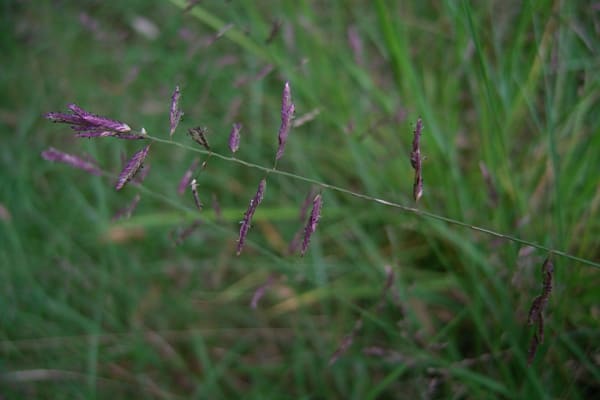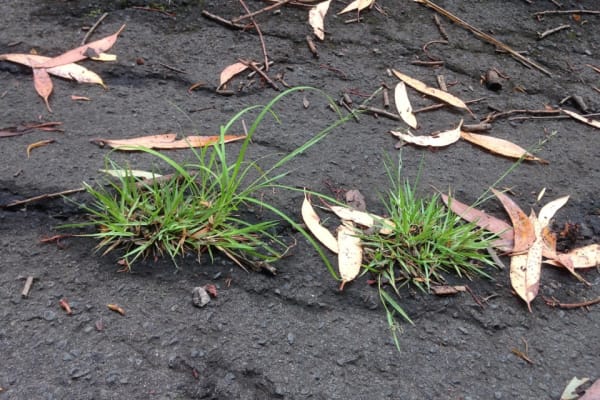I've been paying a lot of attention to local grasses lately, as the topic of creek bank erosion and the plants that can help hold soil together has become increasingly common as we travel through this wet autumn.
A few have featured in these pages before, but one group that hasn't been covered and that is really worthwhile is the Lovegrasses (in the genus Eragrostis). They're pretty, low, clumping grasses with flowerhead often characterised by purplish or even reddish colouration. They're not tall and imposing like some of our local grasses, but they are very very sweet if you look at them closely.
On the Illawarra escarpment and coastal plain, Lovegrasses are usually seen in grassy woodland, sharing the relatively open and sunny conditions with a wide range of other understorey species.
Indigenous Lovegrass species in this area include Brown's Lovegrass (Eragrostis brownii, which is quite diminutive, often no more than 20cm high), and Paddock Lovegrass (E. leptostachya, which is typically over 50cm high). They can be seen all around the place, for example, at Bardess Cresent Reserve in Farmborough Heights, in the grassy woodland area (not the rainforest alongside the watercourse and waterfall), or in Alvan Parade Reserve in Mount Pleasant. They tend to have fairly strong and fibrous root systems, which can help stabilise soils and prevent the plants themselves from being washed away in downpours.

It can be devilishly difficult to get a decent photograph of grasses, as they tend to grow in groups, and in with other species. The best I could do was the below shot where the plants themselves are clearly visible against the black bitumen in the background. Not an attractive garden or forest scene, I must admit, but the plants pulled through the April and May deluges.

I've said that the Lovegrasses are very pretty, and I mean it. But as a genus (collection of species), Eragrostis does present some challenges. The species can be hard to tell apart, particularly when not in flower or fruit.
There are quite a few introduced Eragrostis species, some of which are seriously bad weeds. These include Stinkgrass (E. cilianensis), African Lovegrass (E. curvula) and Elastic Grass (E. tenuifolia).
There are also records of other indigenous Lovegrasses in the region, particularly Drooping Lovegrass (E. parviflora) and – to further confound things – newish (to Australia) superfood Teff (Eragrostis tef, also known as Williams Lovegrass) has been recorded in Sydney.
All this means great care is needed in identifying, and especially in growing, any Lovegrass.
Areas such as Stuart Park in North Wollongong and many verges are infested with the weedy species. There are many keys to grasses, which support identification from a selected range of species, and if you're keen to learn, getting to grips with these is a good start. That and buying a magnifying lens.
But once you've confirmed you're looking at a lovely native Lovegrass, it's a wonderful feeling, particularly if you've made your way through one of the more complex keys.





